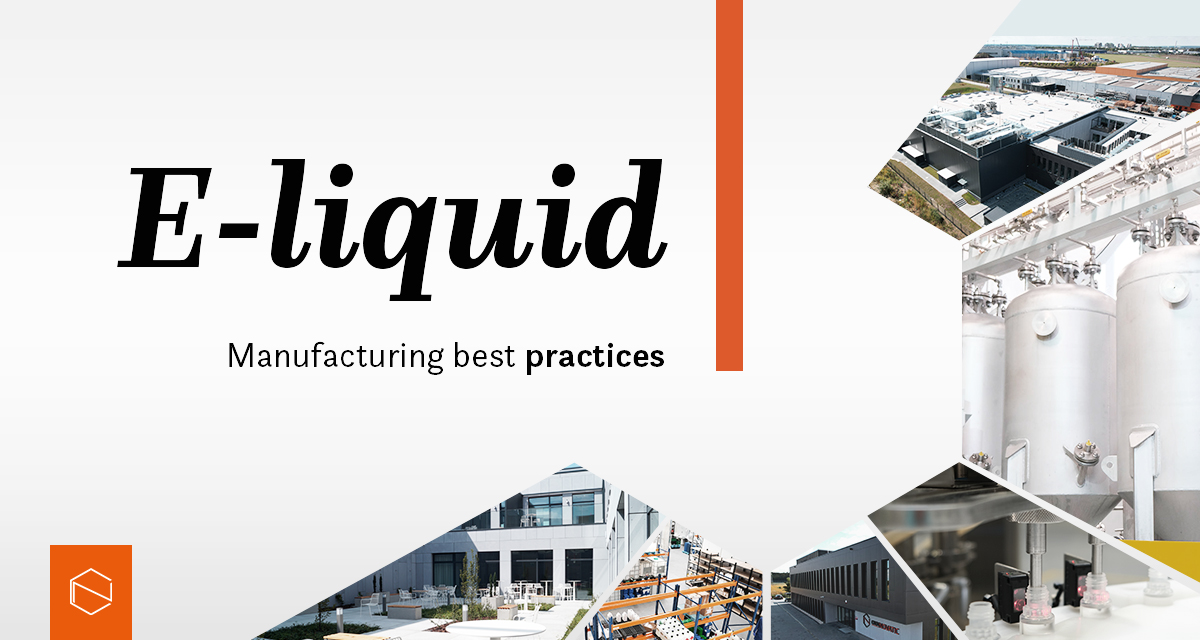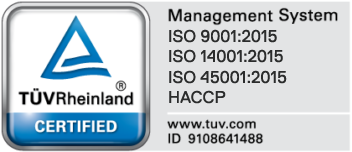
Currently, in the EU the regulations regarding the e-liquid manufacturing process as well as e-liquid packaging and transportation of e-liquids are not specified completely. You expect the products you buy to be safe and produced in a place where the highest standards are adhered to. We have compiled a list of points that also set the stage for us. Take advantage of our experience and see what you can ask your manufacturer.
Learn more:
- OEM Services And Private & White Label: 9 Reasons To Choose Chemnovatic As The Best Business Partner
- E-Liquid Manufacturing Standards: Tips For Producers And Brand Owners
- E-Liquid Regulations In The World
- Industry Regulations: REACH and CLP
- E-Liquid Industry Regulations Guide: [Get Your Free E-Book]
How do you know if the company you purchase your ready-made-e-liquids from is actually following any standards?
Imagine the situation that behind a „professional, leading manufacturer” could be a 14-year-old kid in his garden shed using old, rusty buckets as nicotine canisters, filling droppers with an old syringe, and coughing up mucus all over your precious e-juices.
Since the regulations do not exist, is there a way of verifying the manufacturers? Is there anything you should be looking for?
There is a couple of things you could ask your supplier prior to ordering a batch of e-liquids: there should be certificates available for you to check. Bottles, labels, and boxes should all have proper markings and should comply with certain norms, of course, the best idea is to visit the manufacturing site and see everything with your own eyes.
See also:
- What Are E-Liquids? History And Business Opportunities
- Natural Vaping Products: Bases, Nicotine, Flavorings
- Packaging, Storing And Transport: Why Are They Important For Product’s Quality?
- Storing And Handling Pure Nicotine And Nicotine Salts
- Safe Usage Of Chemicals [Guide]
E-liquids production area
- Surfaces cleaned with an anti-bacterial cleaner at least once a day and on every spill
- The area is clear of any potential contaminants (liquid or airborne)
- No food or drinks are to be consumed in the production area
Equipmment / machinery for e-liquids production
- The production line and all machinery compliant with food and/or pharmaceutical standards
- The machinery calibrated every day, recalibrated every 10 bottles, and between production batches
- Tolerances are set restrictively for the product to adhere to norms
- The production line is exclusive to e-liquids to avoid cross-contamination
Check also:
- What Is Nicotine And How Is It Classified?
- From Leaves To Labs: A Brief Story About Nicotine’s Production
- Hard To Handle, Easy To Vape: How To Work With Nicotine Safely?
- 4 Nic Salt’s Features You May Benefit From
- Nicotine Absorption And Nicotine Salts
- What Is Nicotine Base And How To Use It
- 5 Steps To High Quality Nicotine Bases
- How To Choose The Best E-Liquid Base?
- What Makes A Good Nicotine Base?
- E-Liquid Bases New Generation: What Should You Know About Nic&Salt Hybrid Bases?
Employees
- All production operatives trained in nicotine handling
- Every employee with the access to production area must wear proper protection and safety gear
- Eye protection
- Hair net
- Surgical mask
- Pharmaceutical grade gloves
- Coat/apron
- All open wounds and abrasions have to be properly covered and protected
- All employees must report illnesses and infections to their supervisor
- Any person with discharge from the eyes, nose, and/or mouth should not enter the production area until such symptoms cease
Product
- Confirm nicotine content in the nicotine base prior to mixing
- Confirm nicotine content in finished e-liquid
- Nicotine should comply with the following standards:
- Content – over 99.9%
- Impurities:
- Anatabin–Maximum 0.3%
- Beta- nicotyrin– Maximum 0.3%
- Cotinin– Maximum 0.3%
- Myosmin- Maximum 0.3%
- Nornicotin– Maximum 0.3%
- Nicotin N’- oxid– Maximum 0.3%
- Anabasin– Maximum 0.3%
- Unspecified impurities– Maximum 0.1%
- Water- Maximum 0.1%
- Pure Pharmaceutical Propylene Glycol (PG) and Pure Pharmaceutical Vegetable Glycerine (VG) are compliant with European Pharmacopoeia (Ph. Eur.) and US Pharmacopoeia (USP-NF) standards, Propanediol – Bio Glycol compliant with US Pharmacopoeia (USP-FCC)
- Diacetyl, Acetyl propionyl and Acetoine FREE
- GMO-free
- Use distilled water only when needed
- Use food-grade alcohol
- Ingredients and the finished products must be free from:
- WTA
- Illegal substances and prescription medicines
- Caffeine
- Vitamines and dietary supplements
- Artificial colorings
See more:
- How To Start And Grow E-Liquid Brand?
- Pharmaceutical Quality Of E-Liquids: What You Should Know?
- Tobacco Product Directive (TPD): All You Need To Know
- Own DIY E-Liquids Making: How To Start?
- DIY Nicotine Salt E-Liquids: How To Make Them?
- Mix Your First E-Liquid Using DIY Bases [Guide]
- E-Liquid Flavors To Make Your Recipes Stand Out
- Additives For E-Liquids: What Do You Need To Know About Them?
Packaging/Delivery
- Packaging should be:
- Child-proof
- Tamper-proof
- Labels must contain all required product details and safety warnings
You can see there are quite a few steps which we take to ensure for our Customer that he receives only the best products. We are constantly improving our standards to achieve the highest possible e-liquid quality on the market.
How does that work in Your company? Do you think enforcing the rules and standards without any government organization regulating it is good or bad for the industry?
Currently, there are non-government associations and governing bodies in some countries (AEMSA in the USA for example) trying to set standards for e-liquid manufacturing.
Should there be an International Trading Standards Organisation for electronic cigarette liquids that codifies and standardizes the manufacturing process around the world? We are looking forward to seeing your input!
Summary
We at Chemnovatic have devised the internal best practices checklist regarding the handling and manufacturing processes for all our products. You know them all know, but still be sure to check our manufacturing standards.
Moreover, if you are interested in our services, especially private label e-liquid manufacturing, let us know at sales@chemnovatic.com.
Let’s grow your business together!
Subscribe to our newsletter and receive a free access to our e-mail course on raw materials for e-liquids production (and more!).
No spam, only valuable content we promise to send you.
















looking for OEM for new brand lauching late 2018/early 2019
Is there a contact name to dicuss the products.
Kind regards
Jeremy
Hi, Jeremy!
Check what we can do together – OEM Services ;)